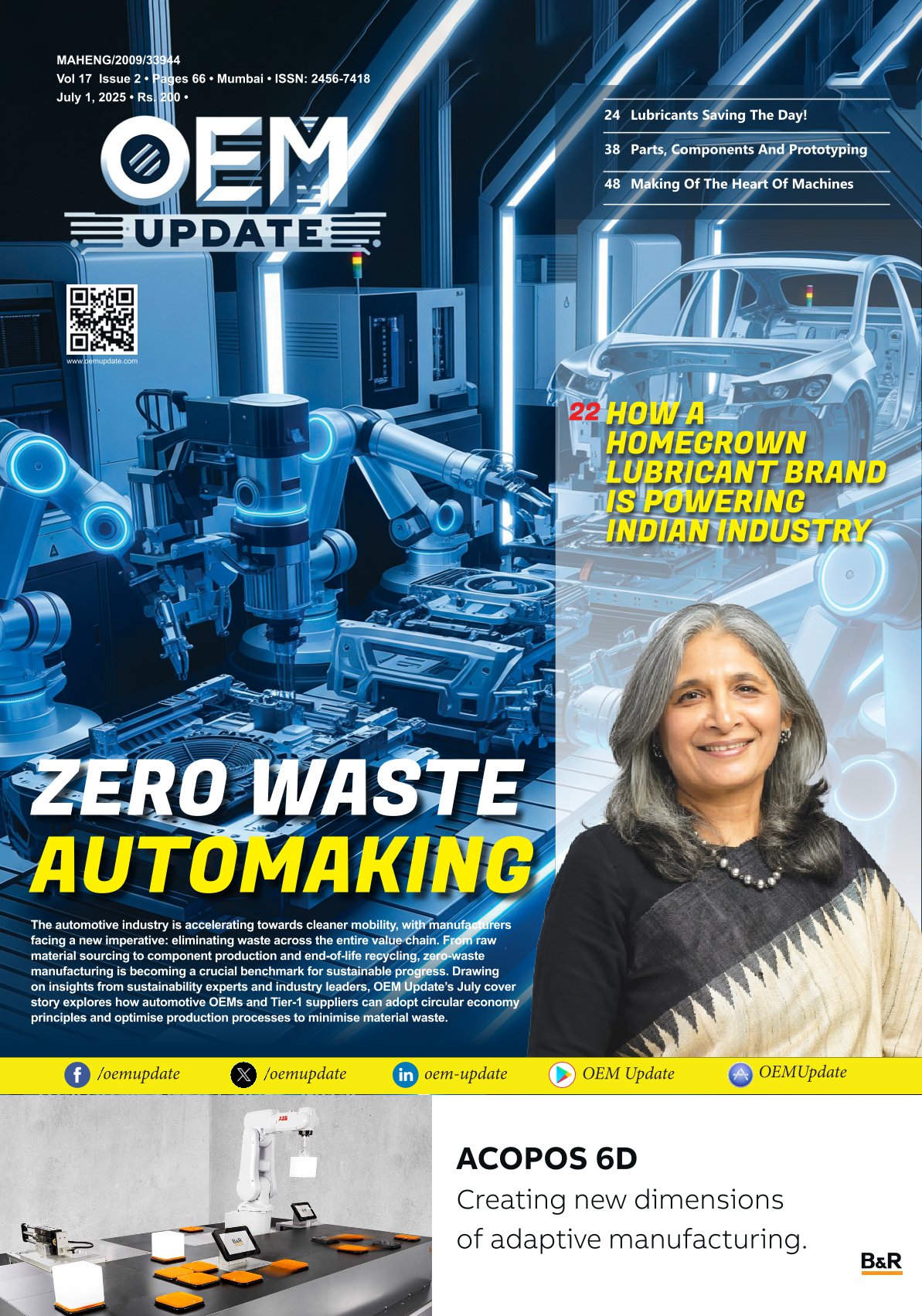Digital lending: The dark horse catering the digital maturity of SMEs
By OEM Update Editorial September 12, 2018 4:25 pm IST
With the coming of age digitisation, digital lending has now taken SMEs under their wings. Here, few of the digital lending gurus share their view on how digital lending is automating and accelerating the collateral free loans.
Small and medium enterprises (SMEs) in India are the most vibrant sectors in the economy producing upward of 40 percent GDP today. They are the key drivers of the economy’s high paced growth story having presence in every industry. As rightly pointed by the SME Chamber of India, SMEs not only play crucial role in empowering employment in India but also act as a complementary to the large industries as ancillary units helping in industrialisation of rural and backward areas, thereby reducing regional imbalances, assuring more equitable distribution of national income and wealth. At the same time these are the most competitive segment of the business ecosystem.
SMEs lack easy access to finance
Despite the given understanding of the strength and criticality of this sector in India, it is surprising to know that SMEs still lack easy access to finance. Abhishek Kothari, Co-Founder, Flexiloans.com, says,” Typical nature of SMEs being unorganised, having unregistered informal set up and having mainly cash business are the main reasons for the financial exclusion in India. Further, lack of adequate financial history or collaterals and the fact that many of the SMEs are remotely located with only small part of the business displaying documented transactions makes it difficult for lenders to assess risk and provide the financial support.”
With the tremendous growth opportunities available, fresh graduates from business schools and colleges are starting off their own start-ups with distinct business idea and looking for the financial support for the first time. In this case also, the lender projects higher risk for the lack of existing similar business activity in the market and that the individuals have no credit history. Abhishek adds, “At times, the necessity of various kinds of documents required by the lenders for underwriting the profile of the potential borrowers are not available with majority of these SME owners which further forms a hick up in channelising credit.”
If we look at some broad numbers, the estimated SMEs in India are upwards of 42.50 million producing more than 6000 products with annual growth rate of over 10 per cent. SMEs require loans for meeting working capital requirement, purchasing raw materials, making payment towards wages etc. to achieve scale and growth.
Pratekk Agarwaal, Business Head – Lending, ftCash, opines, “In the current formal lending process, the FIs (financial institutions) look at various factors to ensure timely repayment and avoid bad debts. Majority of the SMEs do not go for formal credit due to requirement of lengthy paper work and documentation requirement in a brick mortar / traditional lending system. The others are denied credit due to unavailability or poor financial history, lack of collaterals and infrastructure, low ticket size of loan or a repayment track which most of FIs look at. Many first generation entrepreneurs do not qualify as they have lack of experience and are new to credit.”
Digital lending: Changing the finance scenario for SMEs
Today the economy has been moving aggressively towards digitalisation. Every organisation along with the government entities and departments is investing in technology in order to bring in automation and data to foster efficiency and integrity in the system. On the same perspective, the use of internet and smartphones in India is growing at an alarming rate. Abhishek Kothari Flexiloans.com observes, “As per the latest reports jointly shared by IAMAI and Kantar IMRB, about 35 per cent of the Indian population uses internet. Several government initiatives such as digitalising compliance, GST and income tax filing, introduction of Credit Linked Capital Subsidy Scheme for technological upgradation of MSMEs, Aadhar, e-KYC etc. has motivated and created an awareness in the economy to go digital.”
In this pace of digitalisation, the lending industry has found its space of digital lending. Digital lending has made the process of lending easier, faster, paperless, efficient and objective. Unlike the traditional lenders, digital lending platforms have increased its reach through digital channels such as e mails, social networking sites, Search engines, aggregations etc. Availability of data through various digital channels and web-analytics has led to higher volumes of sourcing pertaining to the identified customer segment which mainly constitutes SMEs.
Abhishek adds, “The lenders have also modified its underwriting norms making it quicker and efficient to an extent of even judging the social quotient of the borrower. Data analytics, machine learning and efficient MIS reporting including the use of highly user-friendly dashboards has contributed towards cost cutting of expensive manpower, creating lean systems and identifying and lowering risks associated. Many start-ups like FlexiLoans.com are now betting on this approach to disrupt traditional models of lending.”
In the traditional lending process for SME’s and MSME’s, there are many pain points and inefficiencies that exist and online/ digital lending platforms are taking a step forward to resolve these gaps.
Pratekk Agarwaal of ftCash is of the opinion that the tech-enabled FinTech’s look to be the future of lending to the SMEs in India. He says,” There are various online marketplace and FinTech startups who are focused on meeting the lending demand of the SMEs and catering to specific segments of in specific geographies. This new age FinTech are primarily banking on the trail of digital transactions and of alternative data points such as online financials, credit bureau checks and social data.”
Fintech’s are also partnering with banks and NBFCs to co-create the products for the niche segments to meet the growing demands. While the banks and NBFCs have access to customers and capital, Fintech’s are playing a key role in supporting them with alternative data, tech-based decisions and seamless data availability to support quick decisions. Pratekk adds, “This complements the relationship with the FIs as tech driven platforms reduce the cost of acquisition for the banks and thus, the product can reach the SME masses and is scalable. This was earlier ignored by the bankers due to high cost of processing.”
The combination of financial services and technological advances has changed the Indian lending industry in various ways. This has benefited the lenders and borrowers widely by easing the process and making it paperless.
Keerthi Kumar Jain, Founder & CEO, AnyTimeLoan.in, opines, “About 70 per cent of the credit market was underserved by traditional lenders such as banking and non-banking institutions. Out of the total worth of $2.61 trillion, institutional credit system alone stands for $ 1.2 trillion. However, this opportunity was untapped by traditional lenders.”
The offline lending system faced major constraints of long time for disbursement and high operation costs. Due to old methods of credit assessment, many individuals and SMEs were forced to take loans on higher interest rates from unorganised lenders. This widened the gap furthermore between the demand and the supply of credit. However, when alternative lending system surfaced the industry, it sought a lot of attention from SMEs, which are major contributors of GDP. Online quick lending system helped many start-ups to become a reality. The alternate method of acquiring a loan includes P2P lending, mobile lending, which eliminates intermediaries and connects the lender directly to the borrower, ultimately reducing the standby time and minimalising the documentation.
Regulating cash management during unforeseen expensesEfficient cash flow management is one of the toughest challenges faced by SMEs which results in stress situation on meeting day to day expenses, growth investment and unplanned expenses. Pratekk Agarwaal of ftCash suggests, “Healthy cash flow habits will help manage the business transactions easily and can help forecast financial expenses and grow business steadily. Some of the key rules would be to have a good credit bureau history, maintain healthy accounting practice, supplier relationships to showcase stability, and inventory management as per business cycle. “
Pay attention and make a few changes in the way businesses are run; these healthy habits of cash flow management can go a long way to display a sustainable business model to bankers and let the SMEs concentrate on business growth rather than worrying about cash and liquidity.
To deal with any sort of regulatory headwinds or to overcome unforeseen expenses, a company needs to push itself in a stronger position. A realistic and effective cash flow management plan is necessary for any firm to prevent shortages. The shortages can arise when regulatory changes occur or financial changes are taking place in the firm.
Keerthi Kumar of AnytimeLoan elaborates by saying,” In a bid to shore up the global financial system, regulators and the government have changed the banking industry with new regulations. Adding to that, national government also from time to time has introduced certain regulations to protect the local financial system. To navigate such complicated landscape filled with volume
of regulations, clients or firms need to trust banks for advisory purposes.”
Often the money received as payment doesn’t match the timing of due payments. The most common causes when shortages are faced are donation and grants, unexpected events, reimbursement based contracts; when expenses are greater than revenue and then operating with a deficit. All of that seems to be daunting when there is shortage in the cash flow.
Planning ahead and understanding the cash flow will provide stability to an organisation. A small emergency fund with effective calculations will avert the problems. The most effective way to manage cash flow and prepare for regulatory changes and unforeseen expenses is to draw cash flow projections that look 12 months
forward.
“Accurate cash balance, realistic assumptions of budget, approximate expected time for payments and receipts are to be kept in the mind while projection. Once you have the picture of cash flow, keep a track of the changes which may impact your plan and make adjustments accordingly,” concludes Keerti Kumar
“Various kinds of documents for underwriting the profile of the potential borrowers are not available with majority of these SME”
Abhishek Kothari, Co-Founder, Flexiloans.com.
“To navigate complicated landscape filled with volume of regulations, clients or firms need to trust banks for advisory purposes.”
Keerthi Kumar Jain, Founder & CEO, AnyTimeLoan.in
“FinTech’s reduce the acquisition cost for the banks which makes the product scalable to reach the SME masses.”
Pratekk Agarwaal, Business Head – Lending, ftCash
Cookie Consent
We use cookies to personalize your experience. By continuing to visit this website you agree to our Terms & Conditions, Privacy Policy and Cookie Policy.























